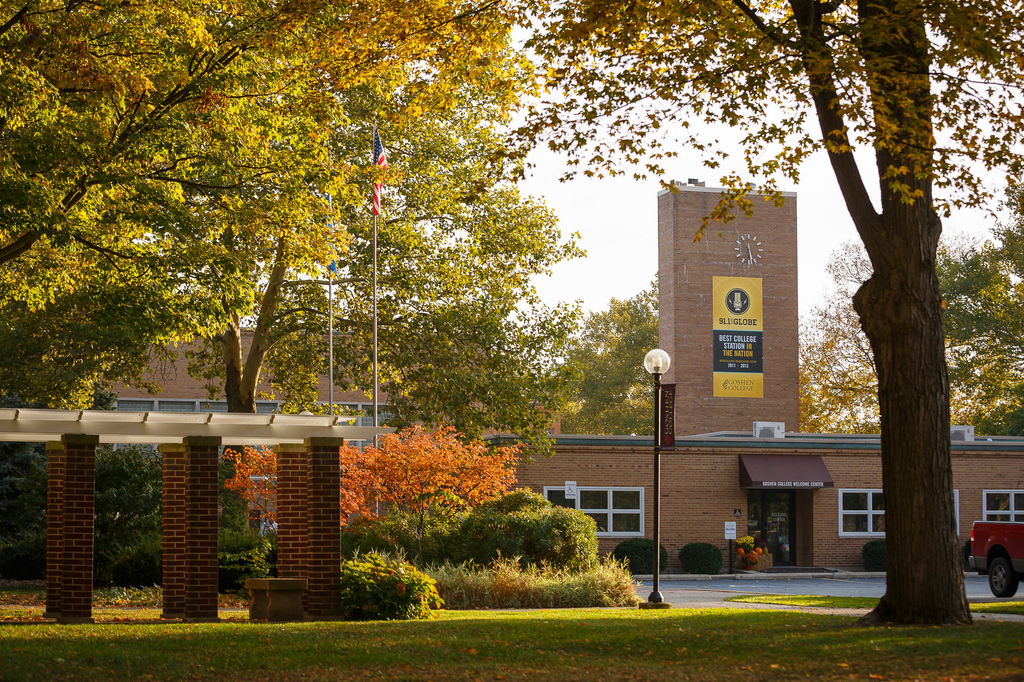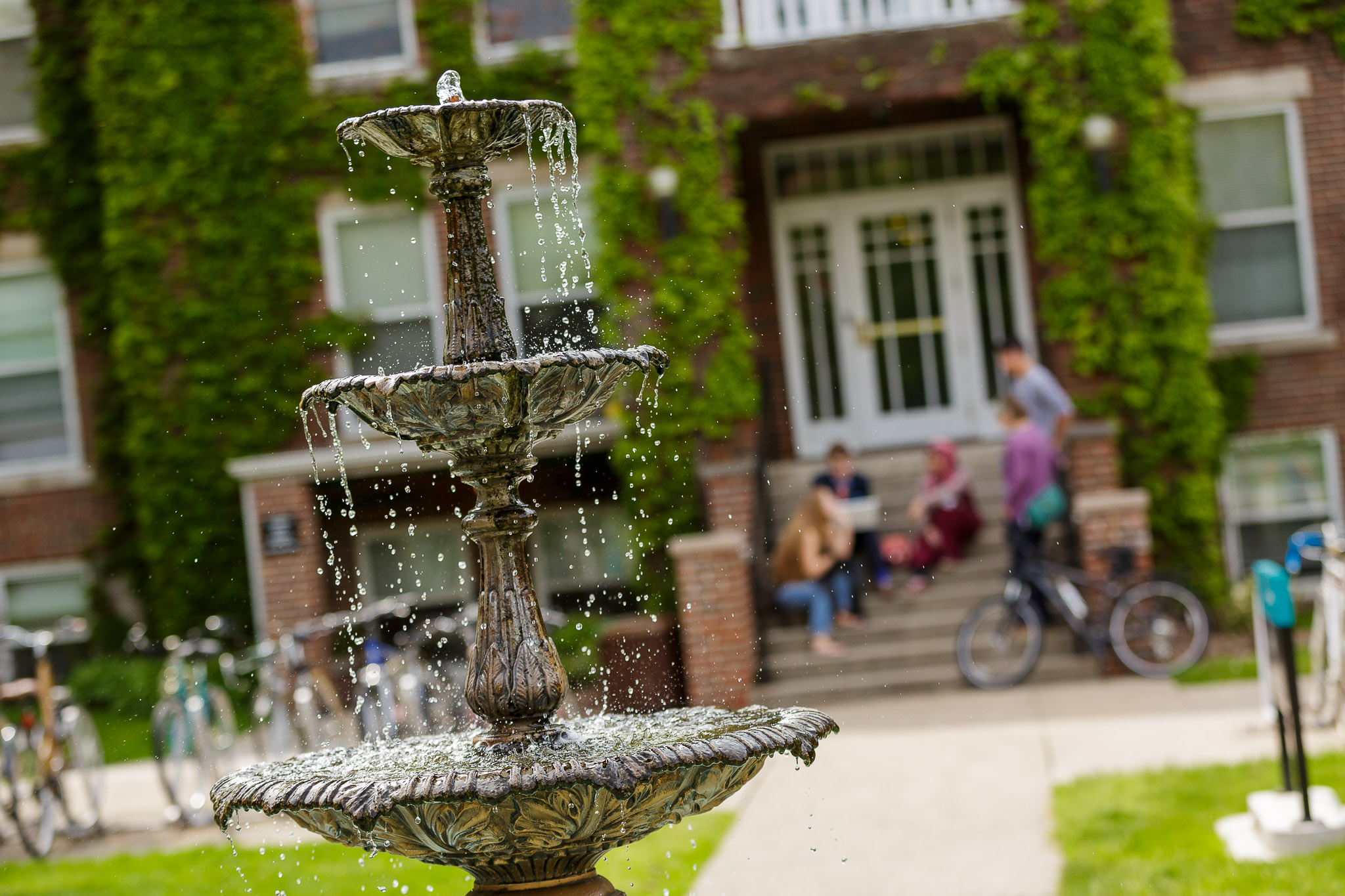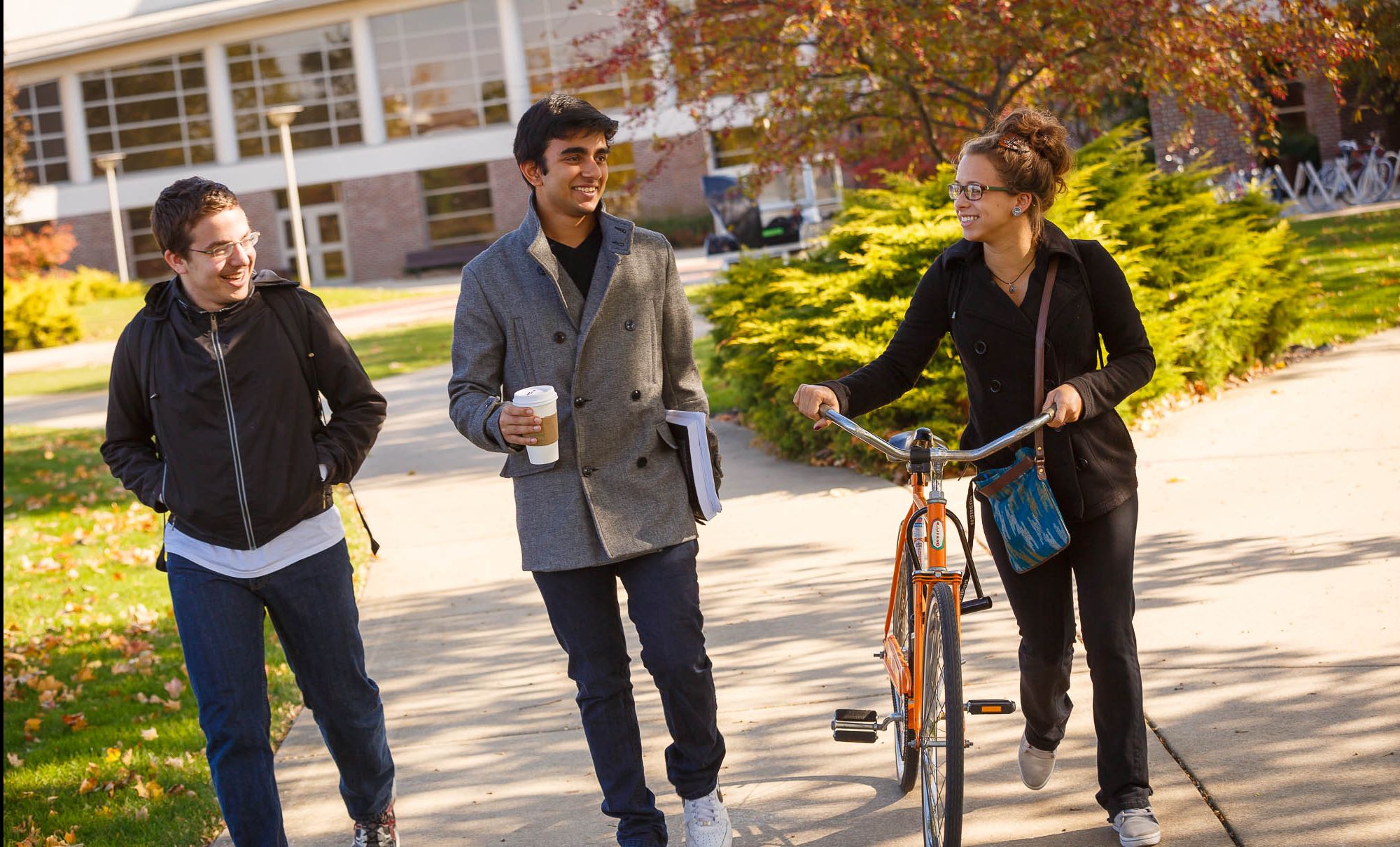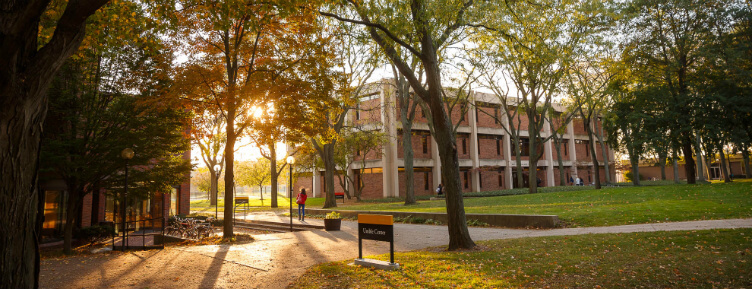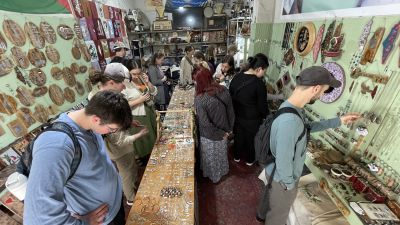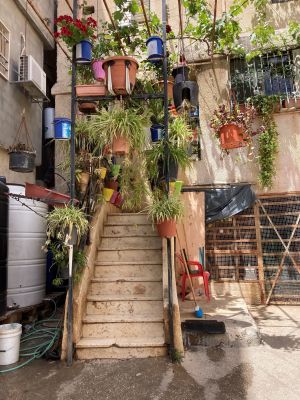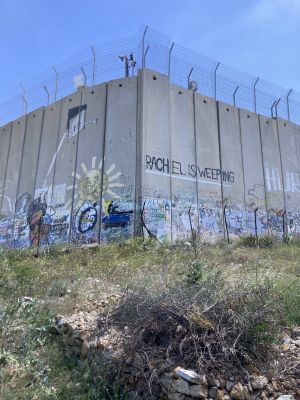“Resilience and Hospitality”
Sadie Brenneman
On the third day of our trip in Israel and Palestine, we made our way to Aida refugee camp, located just a few miles from our guest house. The Aida camp is one of three refugee camps in Bethlehem with around 5,500 residents in 0.071 square kilometers. Sitting along the edge of Rachel’s Tomb, the camp is partially bordered by the apartheid wall and soldier-monitored watchtowers. Aida is sometimes called the most tear-gassed place on the planet, with frequent confrontations between Israeli soldiers and Palestinian refugees.
To reach the camp, we moved carefully alongside the apartheid wall which is over 26 feet tall, layered with swirls of spray paint. We weaved in and out of tombstones to a main road where the sun beat down on our heads. I geared myself up for some sort of shock as I was unsure of what the camp looked like, whom we would see or the environment we would experience. As we approached the main gate, my gaze was caught by the giant key resting along the top of the camp’s entrance, which was outlined in the shape of a keyhole. We walked under the massive key and into the camp. We were in the same city, but a different world.
Inside the camp, concrete houses were stacked one on top of the other, symbolizing the generations of refugees who lived in the space together. We stopped to hear residents’ stories and visited a shop where jewelry is made from tear gas canisters. I bought a necklace. We saw art and commemorations along the walls, with one space listing the location of residents’ original homes and another that memorialized young children that had been killed by Israeli military forces. The day felt heavy.
Our final stop was our tour guide’s home inside the camp. We met his family and they served us tea, a sweet minty liquid in little paper cups. “Shukran,” we said with gratitude.
I left that day with two distinct memories that influenced the way that I think about Israeli-Palestinian conflict. The first memory is of drinking tea in our guide’s home. The hospitality felt unexpected, yet our group greatly appreciated learning and connecting with the people on an authentic level. We were encouraged to ask questions about the life of Palestinian refugees and the differences among their struggles. The gesture of welcome and openness was repeated by many of the Palestinians we met in the West Bank. As a people group, they are some of the most genuinely hospitable people I have ever met. The second memory is of the key at the entrance to the camp, an image that is burned into my brain as a symbol of Palestinian hope and resilience. Since 1948, the year of the declaration of the State of Israel and the year of the Nakba, millions of Palestinians have been displaced or killed. Even now, many families keep the keys to their homes, hoping to return someday.
Aida camp is a microscopic portion of the total number of Palestinian refugees, a number which is estimated between six and seven million people. In the United States, it is sometimes easy to focus on statistics like this one, without acknowledging the innate character of the people being counted. Over the course of our trip, the people’s hope and resilience were shown everywhere, in and outside of the West Bank and in the many stories we heard. Because of the combination of tension and resilience that we witnessed, I eventually came to view our visit to Aida as a sort of microcosm of everything we saw and learned.
I have been taught from a young age that peace is the ultimate goal, that pacifism is right and good, and that nonviolence is part of who I am as an Anabaptist Mennonite Christian. It was not until high school that I realized the privilege that lies in the Western view of pacifism. I am a white woman living in a small town in Indiana with a very low risk of violence being committed towards me or my family. I can leave my country as I please, visit family in different states at any time, and come and go from my town easily. These realities seem simple, but they are not realities for most Palestinians.
I was also taught how to answer the hypothetical question, “What if someone tried to shoot your grandma in your home, what would you do?” The question felt out of reach for me, as do many other hypothetical questions about violence. When our group was asked a similar question by a Palestinian student in the West Bank, we froze. This time the question was framed as, “What would you do if someone forced you from your home and made it a new home for themselves?” Silence fell over our group. I looked to the concrete floor, avoiding eye contact. After what felt like an eternity, a young Italian woman volunteering in Bethlehem spoke up. She explained that it was almost impossible for us to imagine the scenario, given our contexts in countries free of occupation. Her answer made me cringe, although I did not have an answer myself. These hypothetical questions that I often avoid name realities for Palestinian refugees.
As white citizens in the US, it is easy to be pacifist. We can preach nonviolence without truly living out our beliefs. We are free from violence and oppression and feel good in the safety of our homes. Over the course of this trip, I never believed I had the answers to resolving Israeli-Palestinian conflicts. Ever. But in the Aida camp and other places we visited, I realized how much of a daily challenge nonviolence is for Palestinians, and how much of my pacifist identity is privileged by going unchallenged.

